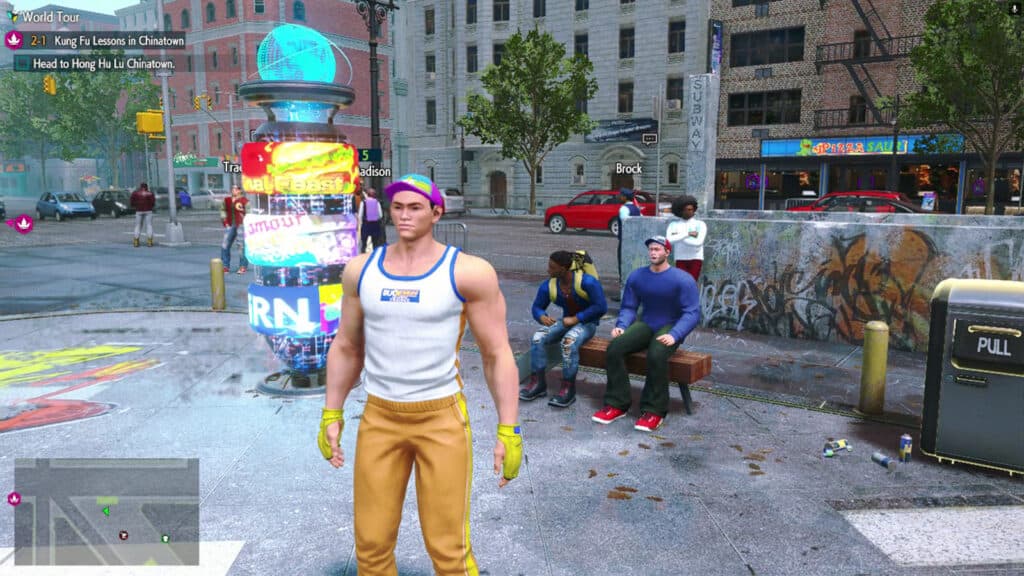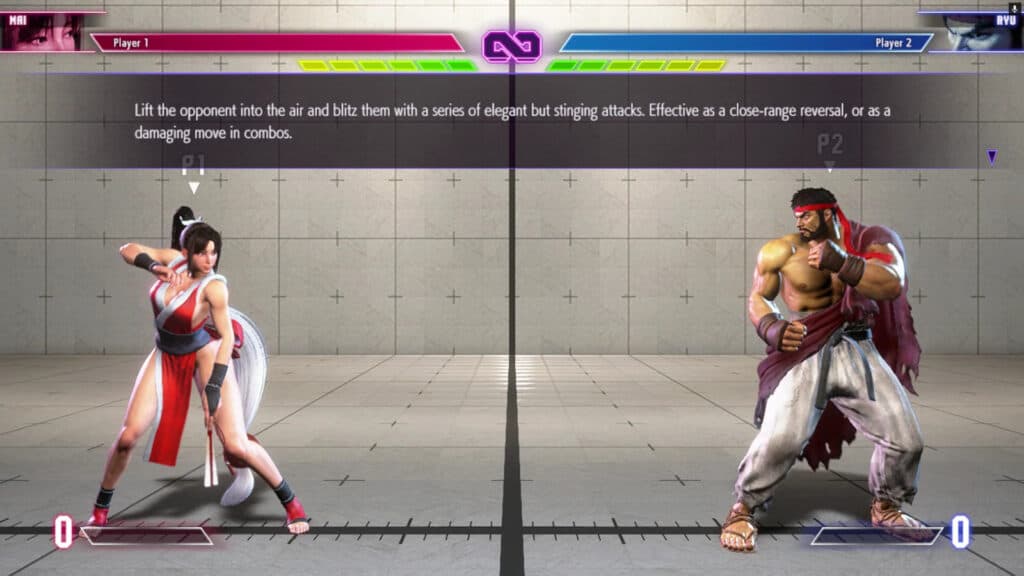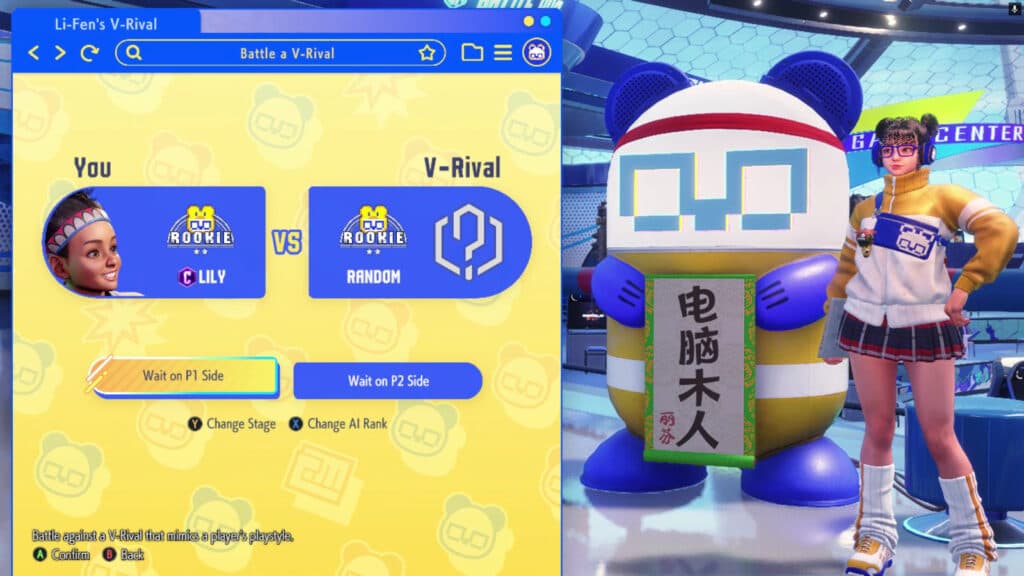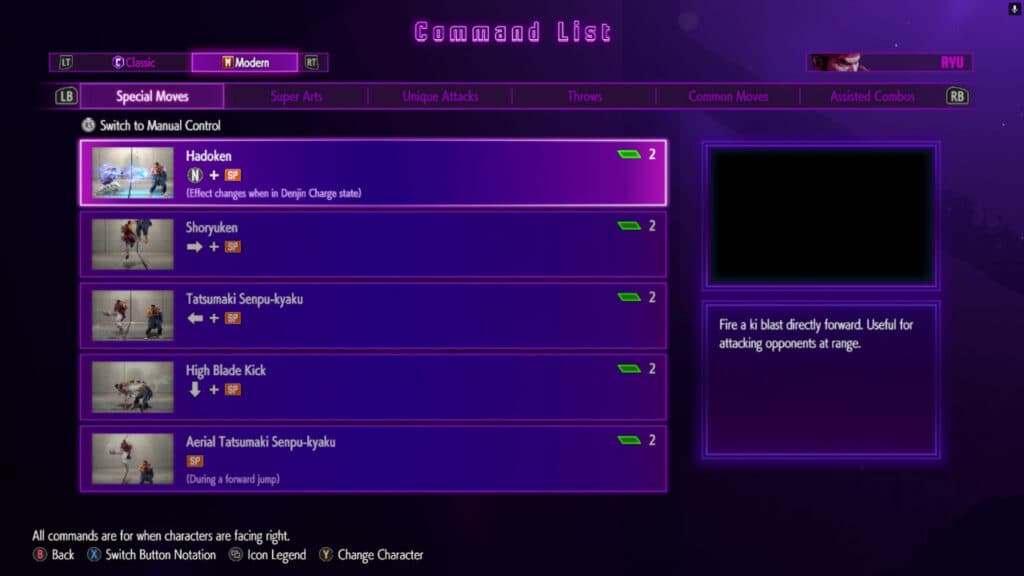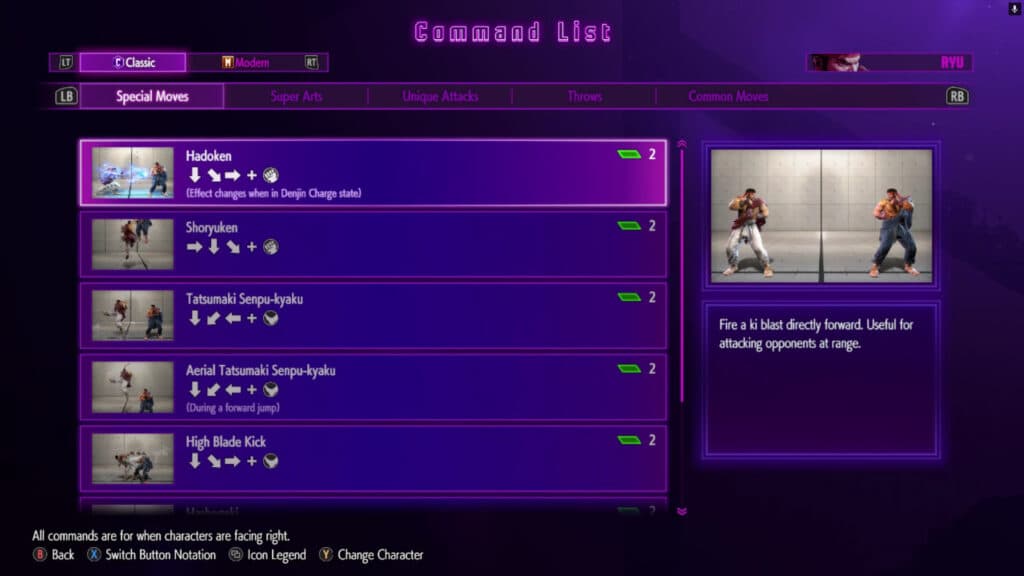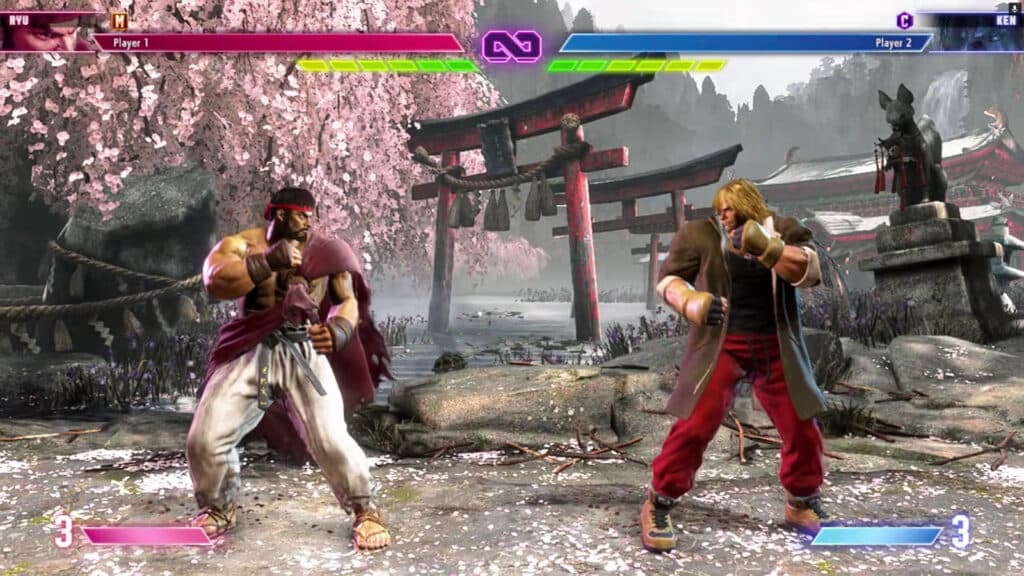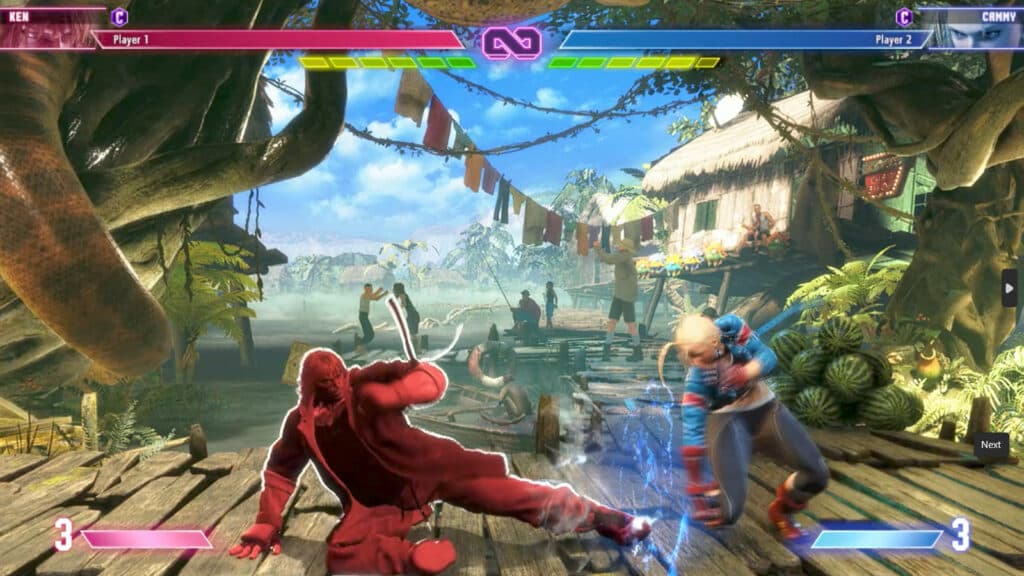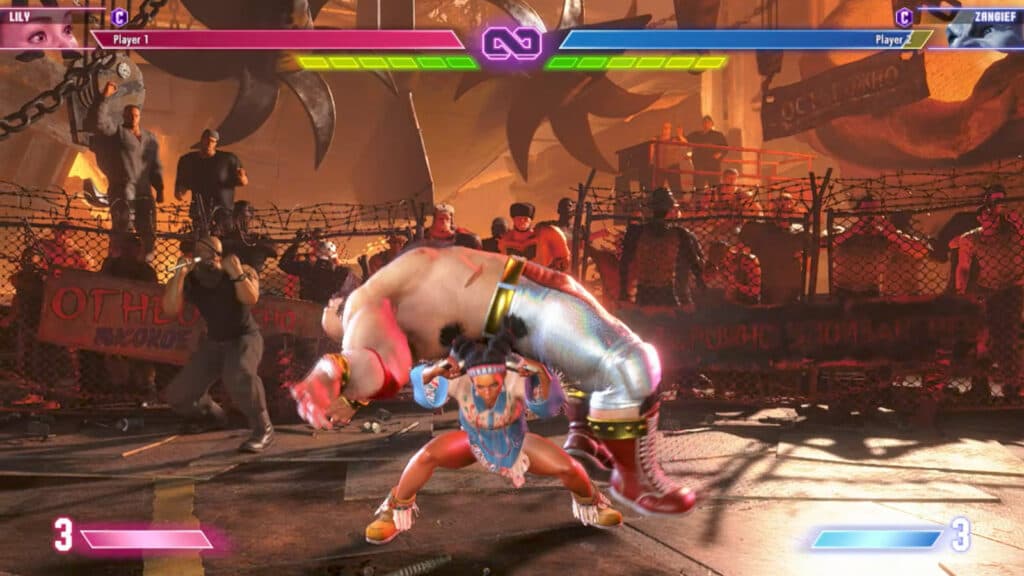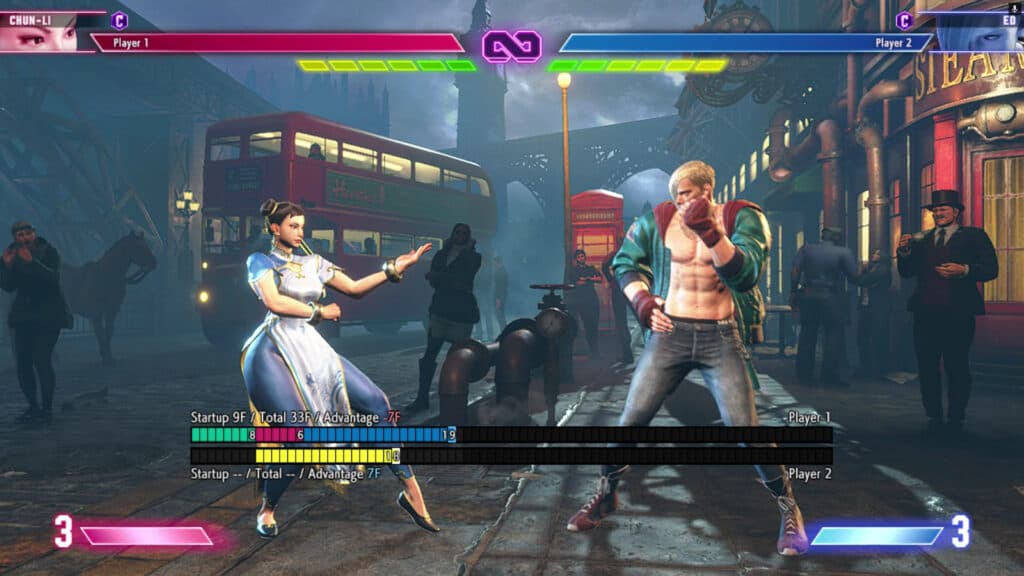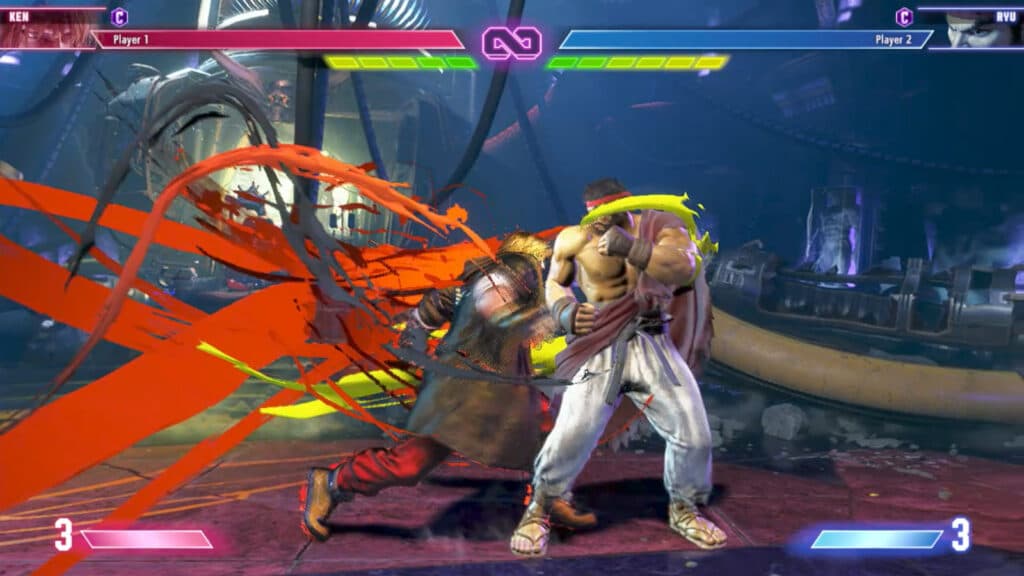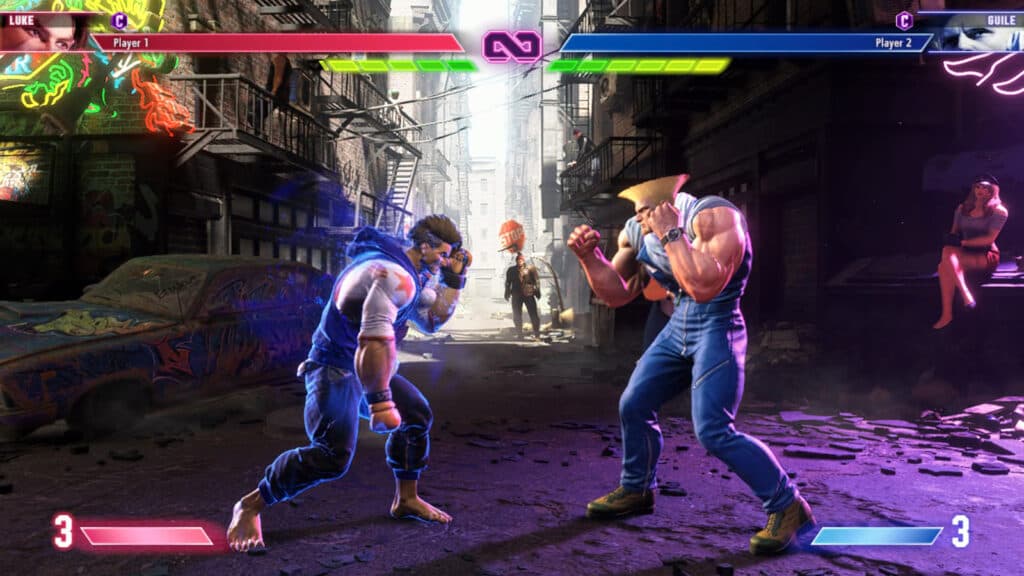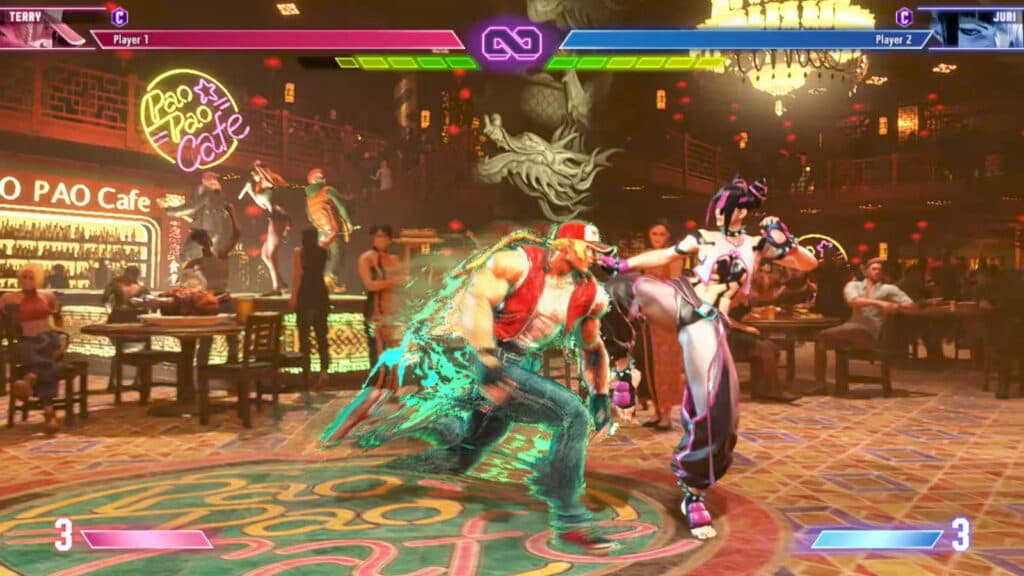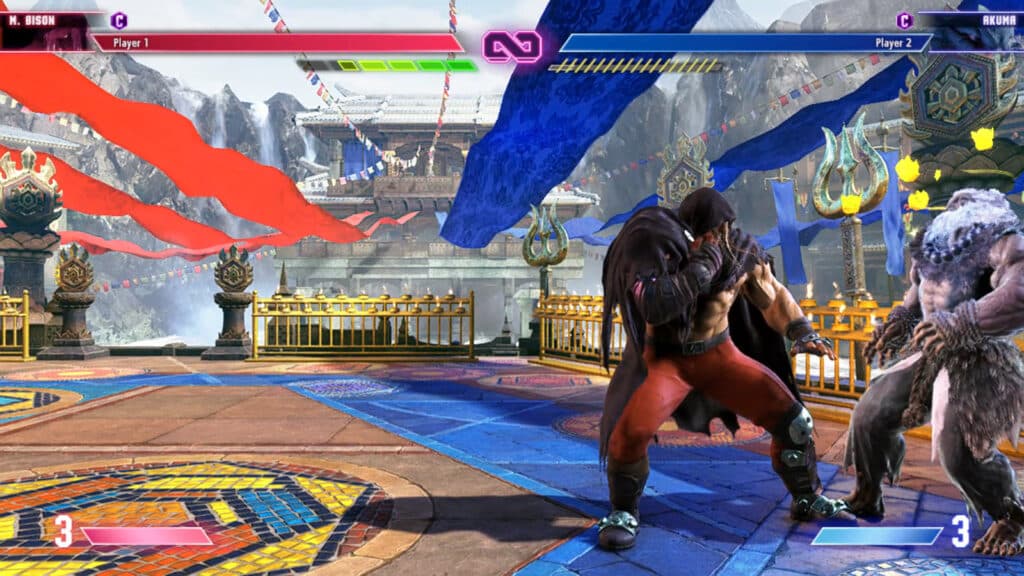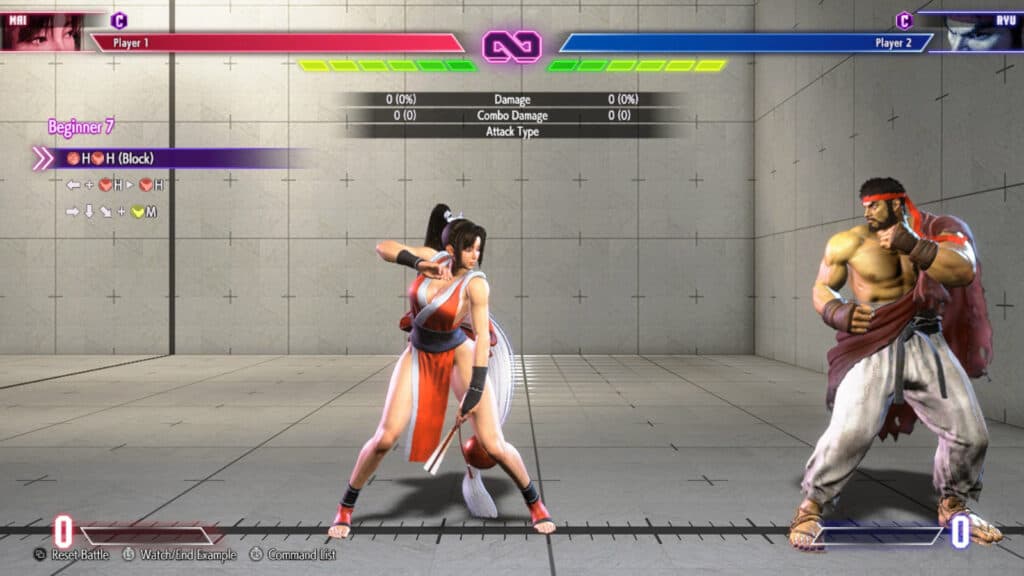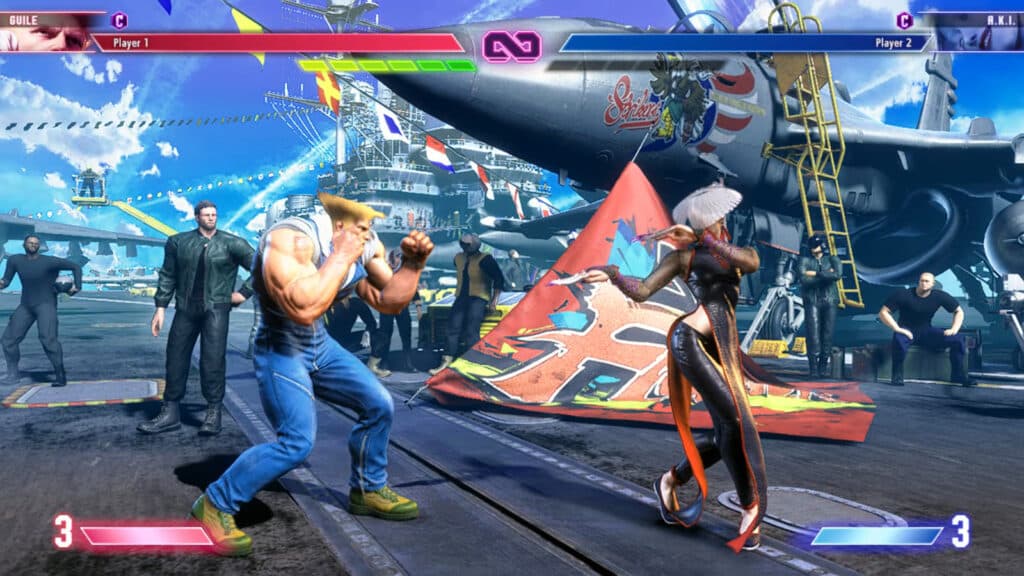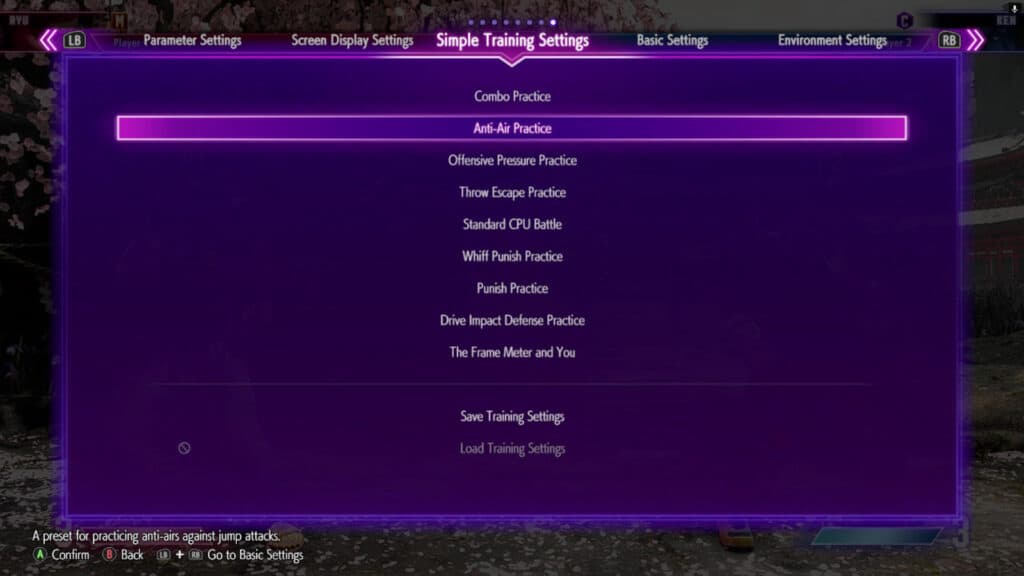The game is deep and complex, but the developers carved the path for beginners to learn all the features and just enjoy the fights.
The entire Street Fighter series has a reputation for being difficult. The core point is not to create obstacles for players but to build a competitive environment where skills and dedication really matter. Such an approach boosted SF to the level of massive and even elite esports in the fighting games community (FGC).
Times changed, though. Many gamers nowadays are not ready to lab for hours to just go online and have a fight. Deep mechanics should come with accessibility — and it feels like Street Fighter 6 succeeded with this as well. For the first time, players have the same classic title but with proper tools for newcomers.
In this guide, we highlight the best way for beginners to play Street Fighter 6. Follow the tips here, and you will not get stuck in your progress.
Street Fighter 6: How to start
The best way to play a fighting game is to have a match vs another human being. No CPU matches can be compared to this excitement! However, you don’t want to go online in SF6 and immediately get destroyed to ashes.
Newcomers to the game (and probably to the fighting games genre) should learn the basics. Street Fighter 6 teaches them in a special adventure mode, World Tour. Start with it!
SF6 World Tour: First steps
This mode is pretty fresh for a Street Fighter game. You create your character, an SF6 avatar, walk around a virtual city, have fights with literally anyone, and learn SF6 basics.
Luke is your first teacher. This character brings young energy to the game, and he is perfect for you to get started. His Specials are straightforward, and they feel great to use in many World Tour fights.
Later on, you can meet other Street Fighter 6 characters and learn their fighting styles. Finding what suits you the best is important for SF6 beginners, and World Tour helps with this.
The experience of playing SF6 World Tour is perfect to kick off your game. It is not necessary to complete it all to start exploring everything else Street Fighter has to offer.
Tutorials and guides
The game has quite a few detailed guides: general, on how to play Street Fighter 6, and about each character.
On the one hand, everything is clear there. However, the process is not necessarily exciting. Reading through explanations and performing the suggested actions works fine for a limited time. Then, you may start to wonder “Well, and where is that cool SF6 action everyone is talking about?”
The point about all Street Fighter 6 tutorials and guides is that you don’t need to finish them to start playing the game. Also, it’s often not a one-time experience. Consume a little bit, go to action, return to the guides after a while, and repeat. Some lessons are difficult here, and you need skills to actually perform those combos.
What is the best SF6 action to have between your guide sessions and World Tour plays? Online matches are certainly a great choice — and we have SF6 beginner tips in this regard.
Online SF6 matches for beginners
The game has all sorts of options for online matchmaking: casual fights in online lobbies, Street Fighter 6 ranked matches, and even avatar fights.
If you are a beginner, feel free to explore them all. However, this may be a tough experience. Here are some tips.
- SF6 has special lobbies for beginners. Head there to have matches with players of the same skill level. These lobbies may not be too crowded all the time, but with some patience, especially on weekends and in the evenings, you will certainly find people to play with.
- Street Fighter 6 ranks are meant to make online matchmaking interesting. Don’t be afraid of them! However, you certainly should know the basics, as people are very motivated in this mode.
- General Casual Matches may be the most stressful choice for SF6 beginners. You may face a skilled player and become a helpless victim. It’s nice to learn from someone stronger, but don’t hesitate to stop playing and look for a more suitable opponent.
SF6 lobbies have a stand with AI-trained opponents: V-Rivals. They are less interesting than real people, but AI adapts to your skills and may be a very helpful training tool. You can use it in beginner lobbies while waiting for others — just don’t forget to check if someone is already there.
Any online match requires you to know the basic mechanics of Street Fighter 6. The task becomes much simpler if you choose a beginner-friendly control scheme.
Street Fighter 6 control guide: Modern or Classic
The biggest issues with earlier Street Fighter games for newcomers is their control input. Most gamers outside the FGC find it difficult to perform Specials and Supers, with all those quarter-circles and Dragon-Punch-like moves. SF6 solves this thanks to its Modern Controls scheme.
Sure, the game still has Classic inputs. They give players the full freedom to unleash those exact attacks they want to perform at any given moment.
Modern Controls explained
You can perform all Street Fighter 6 Special and Super Moves easily with the Modern Controls input scheme. There are no problems with combos as well.
- Normals: Instead of six buttons for three types of punches and kicks, SF6 Modern Normals are based on three buttons only. Players have Light, Medium, and Heavy attacks. You can’t control whether it's a kick or punch, as the game decides it automatically.
- Specials: One button activates a Special Move of your character. With a directional input, the type of your Special changes. For example, Ryu performs Hadoken with Neutral Special and Shoryuken with Forward + Special.
- Supers are performed with a Heavy attack and a dedicated Special button. Press them together. The outcome depends on your energy gauge and a specific in-match situation. Variants with a directional input change a type of Super.
- Modern combos in Street Fighter 6 can be performed with the Assist button. Press and hold it to mash any Normal button and see your character doing a cool combo.
Classic Controls for everyone
All SF6 characters have Classic inputs for their Normals, Specials, and Super Arts. This control scheme sure is difficult for beginners. However, the feeling of being fully in charge of everything that happens on the screen is pretty satisfying.
With Classic Controls, you can craft your combos, trick opponents with false calls, and just be creative with every element of your gameplan.
- Normals are linked to six buttons. You get exactly what you press.
- Specials are connected to attack buttons + directional input, like quarter-circle forward. The attack button strength changes the properties of Special Moves.
- Super Arts require an even more complicated directional input, like double quarter-circle forward.
- Combos are mainly manual. Only simple auto-combos are available with a button mashing. Beyond that, you need full input for each move.
Street Fighter 6 has two sets of tutorials: for Classic and Modern Controls. Make sure you complete at least the beginner section for the input type of your choice.
SF6 Modern vs Classic Controls: What to choose?
The community has different opinions on the Modern vs Classic Controls topic. You can even find some memes with washing “Classic hands” after playing vs Modern.
The long-term fans of fighting games appreciate the Classic Controls more. Players love to be in full charge of everything that happens. It’s the input scheme that can bring you to competitive heights. And it’s just super satisfying to see the results of your input practice in real matches.
However, Modern Controls are a great accessibility feature. Beginners are free to start with them and enjoy the game without a delay. It’s pretty annoying to whiff Super Arts and miss Specials because of the input. When you need a projectile or an anti-air move, doing a Medium attack instead is deadly.
- Modern Controls are better for all newcomers. They help to feel the game, get to know the characters, and just have fun.
- Classic Controls should come to the scene if you want to grow further as a player, and you feel that Modern inputs limit you.
Sure, Modern Controls are not perfect. Quite often a directional button + Special works unexpectedly because you press directions all the time for movement during the match. Input errors happen, but for SF6 beginners, they are less meaningful than frustrating errors on Classic.
How to learn SF6 Classic Controls
To transition to the Classic Controls, start with the training mode. Read through the list of available moves for your character, practice input for them, take this knowledge to CPU / AI matches, and jump into multiplayer action.
If you foresee yourself playing on Classic, don’t get stuck to Modern for too long. They should show you the basics but not become a deep muscle memory.
Both Modern and Classic controls in Street Fighter 6 require a good knowledge of the basic mechanics.
SF6 basic mechanics
Street Fighter 6 follows general patterns of fighting games, and it has some unique elements.
Normal attacks
The division of Normal attacks on Light, Medium, and Heavy is very important.
- Light hits are quick, but they deal small damage and can’t reach far. They are mainly used to find a quick opening at close range and stop an opponent’s offense.
- Medium attacks are nicely balanced in terms of reach, damage, and speed. For many players, they are the main tools in the neutral game.
- Heavy attacks deal the most damage and reach opponents from a big distance, but they are slow. You should be careful with unleashing your Heavies, as it’s easy to punish them on block.
Normal attacks are the fundamental basics for your fight. Some beginners tend to spam Specials in matches. That may be helpful, like shooting a projectile from a distance or doing an anti-air uppercut. But in general, Normals come first, and Specials are activated after a successful hit. This is a pattern for easy SF6 combos.
Blocks
No fighting game is only about attacking. You should know how to block in SF6 to survive your opponent’s offense, find a moment for a response, and then land your hits and combos.
The principles of blocking are universal across the genre.
- There are two types of blocks in Street Fighter 6: standing and crouching.
- Standing block defends from standing attacks and overheads.
- Crouching block defends from standing and low attacks.
Many players prefer using their crouching block by default, as it’s somewhat easier to notice overhead attempts and react to them.
Anti-airs
To crack crouching blocks, SF6 players can use jumping attacks. While in defense, you can react to them actively by an anti-air move, like an uppercut. In this way, you turn your defense into offense.
The trick is that the offensive side can go for an empty jump, and then instead of punishing their attack, you open yourself for a lot of damage. Blocking can be a more reliable choice, but still, your opponent may go for a throw and crack this defense.
Throws
Throws in Street Fighter 6 work against all blocks. You need to come close to your opponent to not whiff it. And you should be aware that a jump can be not an attack but a quick approach to your character to grab and throw them.
All these factors come together in the chaos of an SF6 match. Those who observe the actions of their opponents attentively and react to them properly win these interactions. To make yourself unpredictable, you should mix your options.
Another important role of throws is to put your opponents into the corner — with a back throw. You change sides and suddenly gain an advantage. Attacking someone in the corner is generally a favorable scenario in SF6. Sure, they can try and use the back throw on you.
Mixups
Mixups are strings of attacks that are meant to confuse a blocking opponent. You mix lows and overheads to open your opponent up and continue with a combo or at least damaging Special. Jumps, movements, and throws can be part of mixups too.
Knowing the characteristics of all your Normals and Specials is essential for offensive mixups and defensive actions — to understand how exactly you should react and what actions to use to not let your opponent react effectively.
Frame data
Characteristics of each move in Street Fighter 6 include a number of frames per attack phase.
- Each move / attack has startup, active, and recovery frames. If moves / attacks clash, whatever reaches the active frames first wins.
For example, you decide to go for a Standing Heavy Punch with Luke. This attack has 10 frames of startup. Your opponent is on Ryu, and they decide to press Light Kick at the same moment, with only 5 frames of startup. Ryu wins this interaction.
The situations are very flexible, and it’s difficult to know all the frame data for all the characters. However, it is important to understand the very principles and know what quick and slow attacks your character has — attacks with little and many startup frames.
Plus on block
What about blocks? It’s another layer of frame data in SF6. Every attack applies block stun or hit stun on an opponent. Block stun is the number of frames a victim is unable to move when a specific attack is blocked. Hit stun is the same but on hit.
Here, we should consider recovery frames of an attack and frames of a block stun. They are compared, and if recovery frames are fewer, the attacker has a frame advantage. They are ready to act earlier than the defender. This situation is called “plus on block”.
- If an attack is plus one block, you are safe to use it without being punished. You hit a blocking opponent, and with plus frames, it is still your turn to attack. Such attacks are used in block strings, a series of quick hits to open an opponent up.
To dive deeper into the topic of frame data in Street Fighter 6, check out the SuperCombo Wiki. It lists the characteristics of all moves for all the characters. Also, you can see the frame data in the training mode.
Turns
Having turns is a key principle in a fighting game. You should feel when it is your turn to block or attack. This depends on many aspects: block types, anti-airs, throws, frame data, etc.
When it should be your turn to attack but you block, you miss your chance to deal damage. When you should block but you attack instead, you get damage.
Turns are not strict! It’s a principle of interactions, and you should understand it in general. Then play around it, trick your opponent — those who do this better, win.
Drive System in Street Fighter 6
It’s a unique mechanic in SF6, and you must know and use it. Street Fighter 6 Drive System consists of four elements.
Drive Impact
It’s a mighty attack that comes with a special colorful animation. Drive Impact can absorb two attacks from an opponent, so it wins many offensive interactions. The attack consumes one bar of the Drive Gauge.
Drive Parry
This flawless block defends from all sorts of attacks, low, standing, or overheads. It consumes the Drive Gauge bars over time. Drive Parry has no effect against throws. Perfect Parry is when you activate Drive Parry at specific moments — you have an advantage after this interaction.
Drive Rush
Tap forward twice after using Drive Parry, and your character will rush toward the opponent. It’s an effective technique to punish massive attacks — when the opponent is still in the recovery frames. Drive Rush costs one bar. You can do it after cancellable normals, and the cost becomes three bars.
Drive Reversal
If you activate Drive Impact while blocking, it becomes Drive Reversal. This is a universal counter-attack to get rid of annoying offenses. Drive Reversal costs two bars of Drive Gauge. If you use this technique while your character is knocked down, it becomes Recovery Drive Reversal, which also is a quick counter-attack.
SF6 Drive System has effective options, but you still should use them cautiously. Spamming Drive Impact or holding Drive Parry drains your Drive Gauge. When it’s empty, your character enters a Burnout state. They receive big chip damage and cannot use the Drive System for a while. If a Burnout character is hit with Drive Impact in a corner, they are stunned and vulnerable to any combo.
SF6 combos for beginners
All combos are connected to frame data. You activate one attack after another while your opponent is still in hit stun. Some attacks are cancelable, which means you cancel recovery frames for the next attack — and don’t let your opponent go out from their hit stun.
Big and damaging combos require time to discover. However, you can use the knowledge and experience of pro players and copy their notes.
Many Street Fighter 6 combos are difficult to do, even if you know the sequence of attacks. It is especially true for Classic Controls. Dropping combos is a common thing, even at esports events.
SF6 easy combos for beginners consist of just a few attacks, so there is little risk to drop them. The simplest combo in Street Fighter 6 is a Normal -> Special. Don’t run ahead of yourself. Start with these combos, and then try to add more elements.
Street Fighter 6 has special Combo Trials for each character. You need to practice them again and again in the training mode and then try to bring them to proper matches. It’s the most effective way to learn basic SF6 combos for beginners.
The best characters for beginners in Street Fighter 6
You should consider two factors while choosing your SF6 character.
- Who are the beginner-friendly characters?
- Who do you personally like the most?
The best characters for beginners in Street Fighter 6 are the following.
- Lily and Marisa: They have a limited number of moves, and their gamplans are straightforward. However, the characters are not viable in the high-skill play.
- Luke, Ryu, Ken, Cammy, Chun-Li, and Terry: These characters have a proper set of Specials, but their gameplans are still easy to understand. You need more time to learn such SF6 characters for beginners, but they can be played even at esports events.
The characters you like the most are generally the best for you, even if they are complicated. Street Fighter 6 allows players to express their personality in the matches. If you like a character, you are motivated to play them more. It’s the secret of success!
The liking factor still should connect with the beginner-friendly one. You don’t want to get stunned by the complexity of JP or Dhalsim at the very start of your experience in SF6. Maybe you really like someone out of the best beginner Street Fighter 6 characters?
Street Fighter 6 training mode tips
In general, you can divide the fighting games experience into two vibe types.
- Intense matches
- Chill training
Sure, the intensity of your matches and the chill atmosphere of your training depend on many factors. But the point is — you should mix these two activities. Real matches are necessary to feel excitement from the game and be motivated to play. Training makes you a better player and allows you to learn new tricks.
Training mode in SF6 should be a place for regular visits. It has different options for you to set specific situations and practice various actions.
- Start with checking out the command list for your new characters. Press buttons and feel how the moves work on the dummy.
- Make the dummy block to practice your blockstrings and build them into your muscle memory.
- Regularly train basic SF6 combos.
- Make the dummy do something and train your reaction. It could be a quick hit after your attack, so you go for the block. Or, the dummy can perform high-low mixups with throws, and you practice not to get hit.
Take it easy in the Street Fighter 6 training mode. It’s nice to listen to music and repeatedly press combo buttons. However, if you do not add real matches to your playing sessions, you risk getting bored. Moreover, everything you learn in the training mode should become a practical skill: it’s so much different to land a combo on the dummy than to use it in a fight.
Training mode options
Don’t rush to activate difficult practice options immediately. Play the game, feel what you need to improve, look at what the training mode has specifically for this situation, and then create a proper environment. Beginners can start by practicing moves and combos to then deepen their training mode usage gradually.
When you are ready, go to the special section in the SF6 training mode:
- Anti-air
- Throw escape
- Whiff punish
- Drive Impact Defense
- etc.
What to do if you lose SF6 matches?
Losing SF6 matches is not a tragedy. You can’t avoid this experience. No one can! Losing in Street Fighter 6 is part of playing and learning.
Don’t make a big deal out of a few losses. Try to analyze what goes wrong for you. Consider what you can practice in the training mode.
If you lose too many matches in a row, you may need to change your approach.
- Casual matches in general SF6 lobbies do not consider skill level of players. You can face really strong opponents here. Go to a beginner lobby or play Ranked matches, where the system tries to connect players of the same level.
- There can be smurf accounts in Ranked or just more experienced players who come from other fighting gamers. It is quite possible to get destroyed in Ranked. Just don’t blame yourself. You may want to play a few matches vs AI to get refreshed and return for new opponents.
- Some characters may not work for you. Reconsider your choice.
- If you struggle with Classic Controls, consider using Modern for a while. Then practice Classic input against the dummy.
Every loss is an opportunity to get better. These matches show your weaknesses, and they are certainly not the end of the world.
Have fun!
The core trick for getting better in SF6 is to enjoy the game and be curious about it. Watch streams of pro events to absorb top-level tricks — even if you can’t do that now, you can feel the pace of the game and see what to aim for. Check out various guides for your favorite character to discover something new about their capabilities.
Also, it is a very good idea to join the community, online and offline. Communicate with other players on socials. Find real-world friends to play offline: for example, in your local gaming clubs. The game sure is about competition, but it is also about enjoying the fights together.
Hopefully, you could find some helpful SF6 beginner tips in this article. For more Street Fighter 6 guides, stick around on esports.gg!
